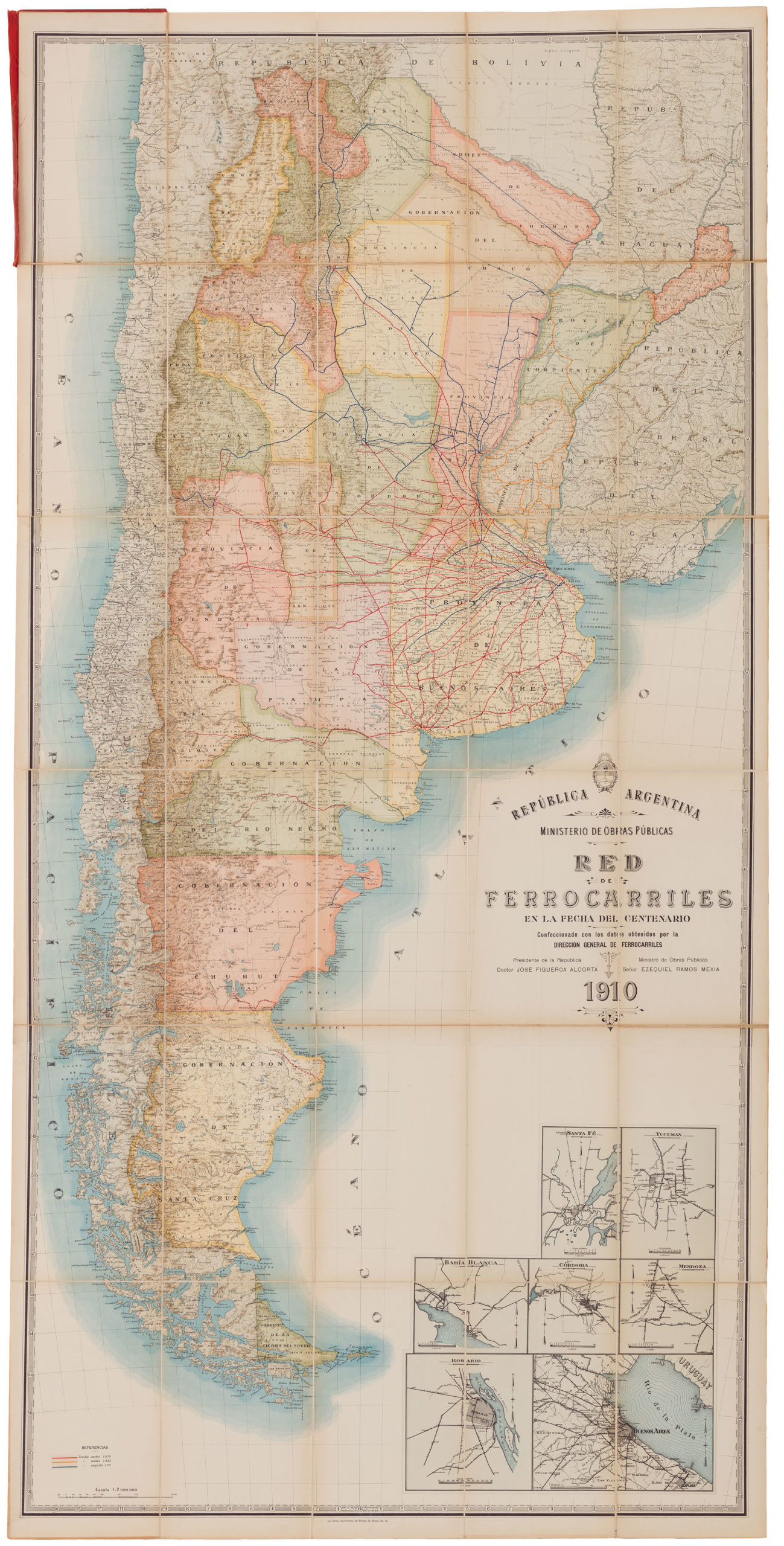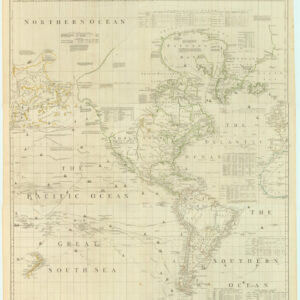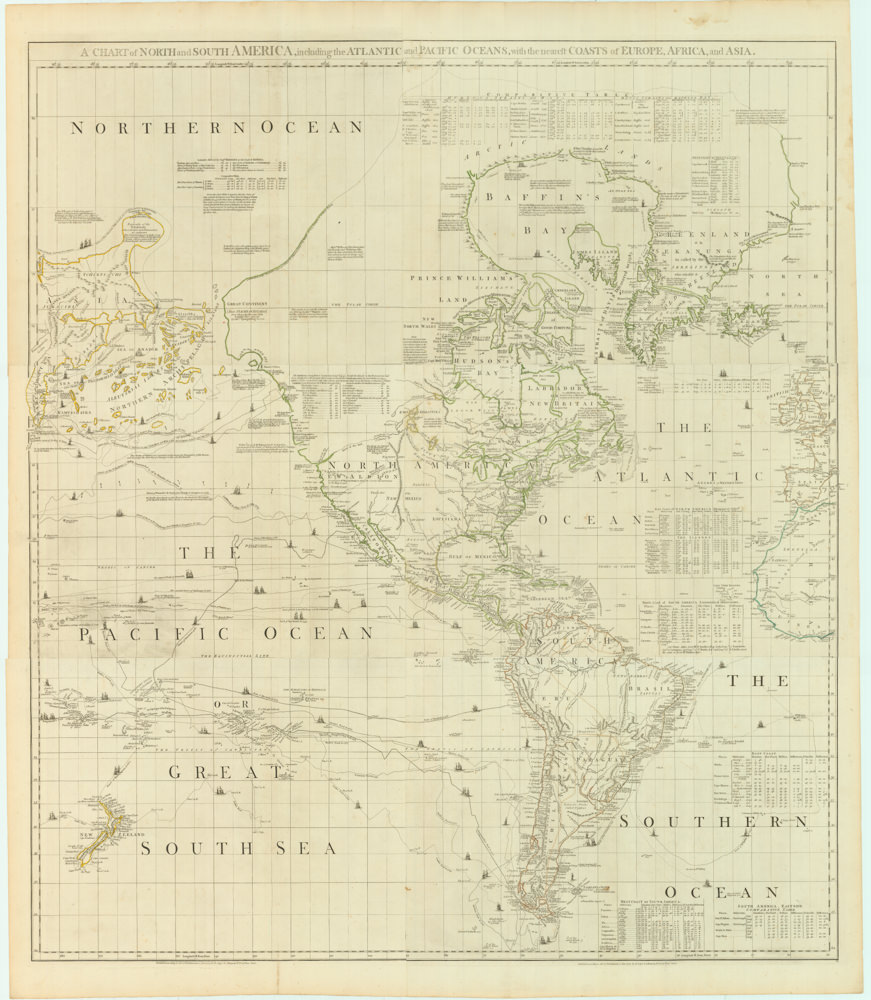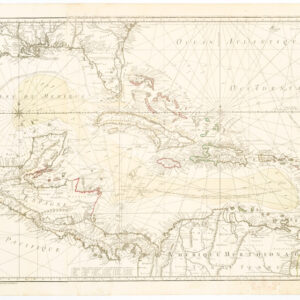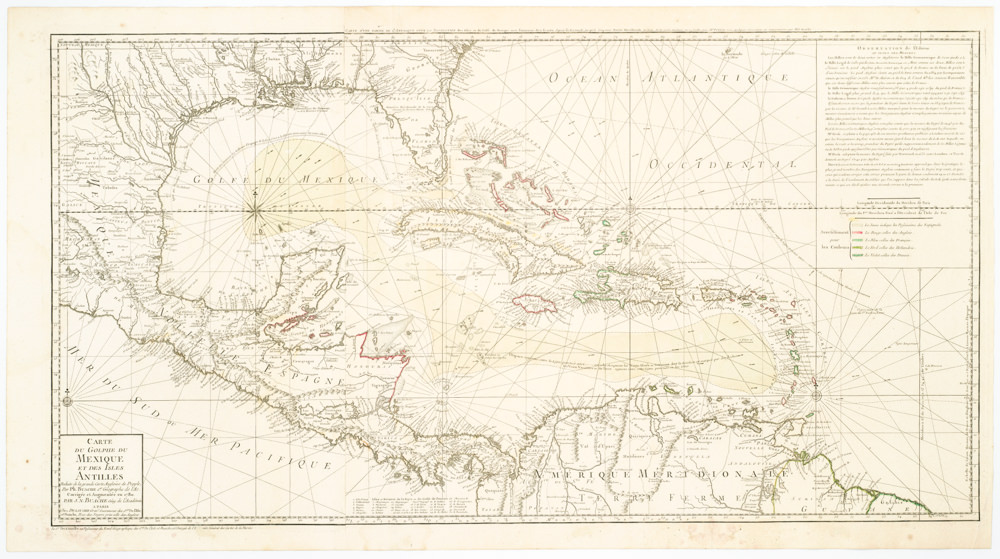Unique folding example of Delisle’s influential map of the Western Hemisphere, with undiscovered Pacific Northwest.
Carte d’Amerique Dressee pour l’Usage du Roy…
$475
1 in stock
Description
This highly-detailed map of the Western Hemisphere was one of the most popular maps of the 18th century. It provides a great deal of information about the state of geographic knowledge in the New World in the early part of the century. The Pacific Northwest is left blank, reflecting its status in the first half of the 18th century as one of the last great undiscovered coastal frontiers.
Nice detail in California and the Southwest. For California, the west coast is taken north to Cap Mendocin and Cap Blanc, with the notation, “Entrée decouverte par Martin d’Aguilar.” This refers to the supposed discovery of a large west coast river opening by Martín de Aguilar (fl. 1603), a Spanish explorer whose log contains an important written description of the area.
Aguilar was the commander of the ship Tres Reyes in an expedition led by Sebastián Vizcaíno. Vizcaíno set out from Mexico in 1602 in search of usable harbors and the mythical city of Quivira. While exploring along the northern California coast, a storm separated Vizcaíno and Aguilar’s ships. While Vizcaíno may have reached the present Oregon-California border, Aguilar continued up the coast. Aguilar is thought to have sighted and named Cape Blanco, and he may have sailed as far as Coos Bay.
Aguilar reported sighting a “rapid and abundant” river, although he did not enter it because of the current. An outbreak of scurvy then forced him to turn back to Mexico; he and most of his crew died before they could reach Alcapulco.
The course of the Mississippi is pushed considerably west of its true location, but the Missouri River is shown in a remarkably accurate fashion, with headwaters in the Northern Rocky Mountains. The French territory of Louisiane takes up the lion’s share of North America at the expense of the British colonies. This political bias is due to Delisle’s position as geographer to the King of France. South America is much better represented with good depiction of the river systems and locations of the Jesuit missions.
The map is rich with Indian and other early American details. Decorative cartouche, compass rose and extensive notes throughout the map.
Cartographer(s):
Covens & Mortier were a dynamic publishing duo working out of Amsterdam in the 18th century. Johannes Covens (1697-1774) was a Dutch geographic publisher based in the capital, whereas as Cornelis Mortier (1699-1783) was the Dutch-born son of a French cartographic publisher working out of Amsterdam.
Mortier’s father, Pierre Mortier the Elder (1661-1711) had in 1690 obtained the king’s privilege to distribute the works of French geographers in the Netherlands and subsequently settled in Amsterdam to build his business. Following his death, Cornelis took over his father’s business in 1719 and partnered up with his brother-in-law, Johannes Covens, a couple of years later. The pair soon began publishing maps and atlases under the name Covens & Mortier. Over the ensuing decades, the business passes from one generation to the next, effectively maintain the Covens & Mortier brand throughout the 18th century (but changing the name several times along the way).
As a result of Mortier Senior’s original privilege, the firm specialized in re-issuing iconic French geographers such as de l’Isles, Jaillot, and Sanson. But they did not limit themsleves to French products alone. In 1725, the duo reissued Frederik de Wit’s Atlas Maior from 1705, just as they issued their own pocket- and town atlases. They also purchased plates from other firms and mapmakers and modified them according to their commercial vision. Among the plates subsumed under the Covens & Mortier brand were those of Pieter van der Aa, which were acquired in 1730. This was also the heyday of the firm, when it supposedly owned the single largest collection of cartographic prints ever accumulated in the mapmaking city of Amsterdam.
Guillaume De l'IsleGuillaume de l’Isle (1675-1726) was a French cartographer who was a key figure in the transition toward a more scientifically grounded cartography.
He was renowned for the extraordinary quality and accuracy of his maps. Especially his depictions of North America stand as some of the most critical milestones in mapping the continent, as they were based on the most up-to-date information available and had been culled of all mythical or imagined augmentations. De L’Isle also recalculated latitude and longitude based on the most recent celestial observations and incorporated these revisions onto his maps. In doing so, he set new entirely standards for cartographic accuracy.
De l’Isle came from a family of French cartographers, though none were as acclaimed as he would become. He trained under his father from an early age and later studied mathematics and astronomy under Cassini. This combination of practical mapmaking experience and a deep scientific understanding of cartographic principles allowed De l’Isle to become one of the most significant figures in early 18th-century cartography.
De l’Isle established his firm in his twenties, issuing his first atlas in 1700. Two years later, he became a member of the Royal Academy and moved his firm to the Quai de Horloge, a center for printing and mapmaking in Paris. In the following years, Guillaume De L’Isle would produce some of his repertoire’s most iconic and essential maps. In 1718, he was appointed Royal Geographer to King Louis XIV, a position which he maintained under Louis XV until his premature death in 1726.
Condition Description
A truly unique example: sectioned and laid on original linen, allowing it to be folded up.
References
Tooley (Amer) p. 13, #4, plt. 2.

